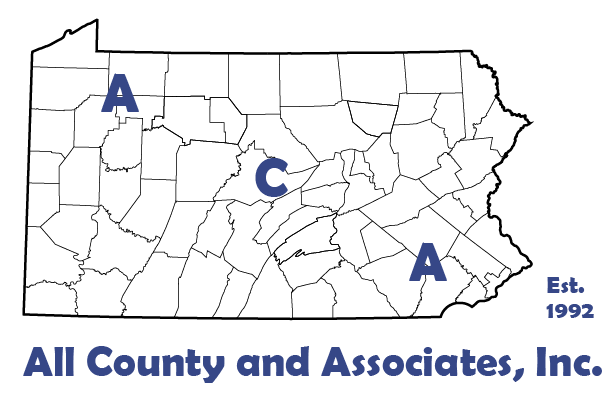
A few weeks back, we talked about the role of an engineer at ACA. Now let’s take a look at recent changes to the regulations that guide their decision making.
New Commonwealth Regulations
Local, State and Federal regulations all dictate a project’s design. From time-to-time updates occur to those ordinances and regulations. Construction-related stormwater, both during and after, falls into the NPDES program. NPDES stands for National Pollutant Discharge Elimination System and is an EPA delegated program.
Approximately every five years the Commonwealth must submit to continue the authorization. This includes a description of the program and underlying regulations. EPA then can include modifications that ensure the program meets the Clean Water Act. Historically, this reauthorization process causes updates to regulations and new forms of documentation.
On December 8, 2019, the Commonwealth reissued PAG-02 General NPDES Permit for Construction Stormwater. This covers most earth disturbances greater than one acre. Excluded from that are agricultural practices, timber harvesting, and road maintenance. Additionally, projects meeting criteria like Special Protection Watersheds do not apply. Instead, those projects must submit for an Individual NPDES Permit.
What Changed?
All changes occurred in forms, instructions, and processes. No new design manuals, guidelines, or regulations changed. One big change was any existing permit holder must submit for reauthorization. This submission must occur before March 9, 2020, or their permit will be terminated. Another change was to the period of authorization. Previously, this was a five-year permit. Now, all General Permits expire on December 7, 2024, no matter their status.
The primary form is the NOI, Notice of Intent. The document updates included requiring extra information to provide greater details. It also requires more information on the during and after construction discharges. In addition, to form revisions, the update now requires a wetland determination for all projects. Finally, all off-site non-surface water discharges now require an easement. This easement can be common law or expressed. This is in addition to ensuring these discharges prevent accelerated erosion.
Finally, the posting period for permits was changed. The posting period is the timeframe from review completion to authorization and public display. In other words, it is the time from approval until you can break the ground. Previously, you could begin construction as soon as the approval letter was received. Now, the listing will not occur till the next month after approval.
Will This Impact Design Costs?
This is a difficult question to answer. First off, at the beginning of any new program, there is a learning curve. With new documents, come new questions and these can lead to additional time. The amount of documentation has increased, so yes upfront costs could increase. Requirements like wetland determinations, paperwork, and calculations take time. That said, things like required pre-application meetings and a new DEP created worksheet should reduce time spent. The goal is to ensure better upfront work saves time and money in the long run. DEP’s hope is this will result in smoother projects, redesigns, and renewals.
One big sticking point that has big implications on project costs is the review of the Standard Operating Procedure. This SOP dictates timeframes for District/DEP review but also resubmissions to rejections. If your initial submission is Administratively Complete, your project enters a guarantee program. Honestly, most projects don’t meet this… Therefore, DEP has no requirement to complete reviews in a timely fashion. Instead, reviews occur in a first-come, first-serve manner. For deficiencies, you have a deficiency correction period. If you fail to stick to those time frames, DEP can withdraw your application. This is important because then all the permitting fees have to be paid again. So yes, DEP has no requirements or penalties for their delays but your own could result in hefty costs.
Who is ACA?
Started in 1992 and located in Chester County, PA ACA has grown to become a full-service engineering firm. Today, we merge professional services with practical knowledge for residential and commercial projects. No matter the scale, from installing a fence, to building a structure or developing land, you need permits. Because the approval process includes many permits and agencies, it can be a headache. Working with ACA’s full-service team saves you time, money, and headaches. Every step of the way, we are here to support you and educate you about the process. Here are some of the basic services we provide:
Construction Management | Civil Engineering | Environmental Permitting | Septic System Testing and Design | Land Surveying | Wetland Delineations and Mitigation
Please feel free to browse our website or if working on a project or need help, contact us at (610) 469-3830.
Also, join the conversation on: Facebook | LinkedIn
